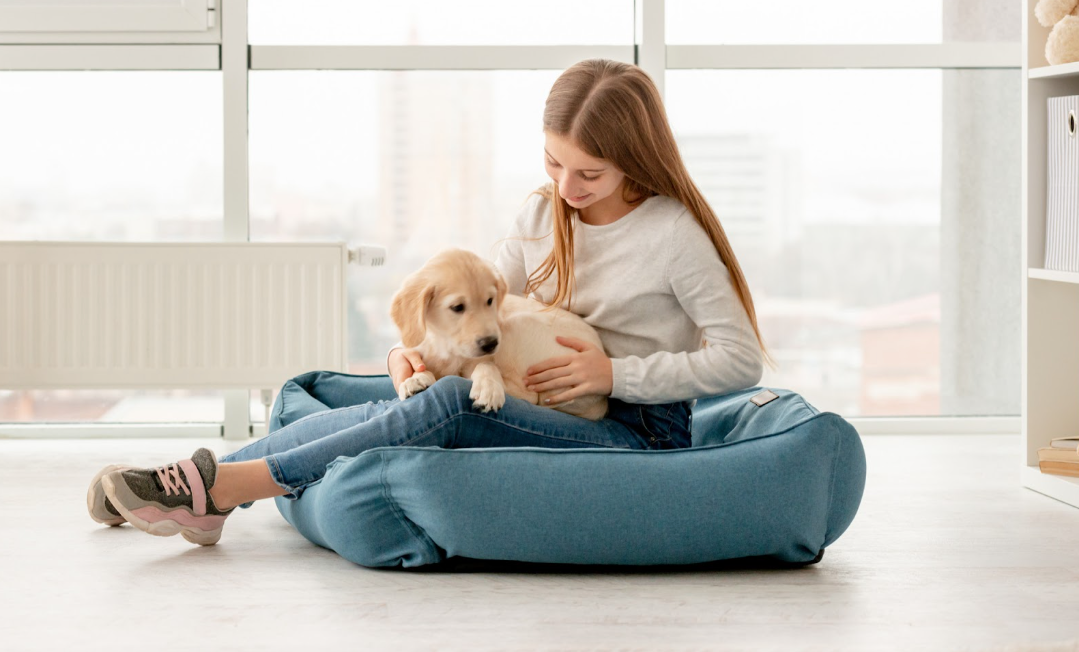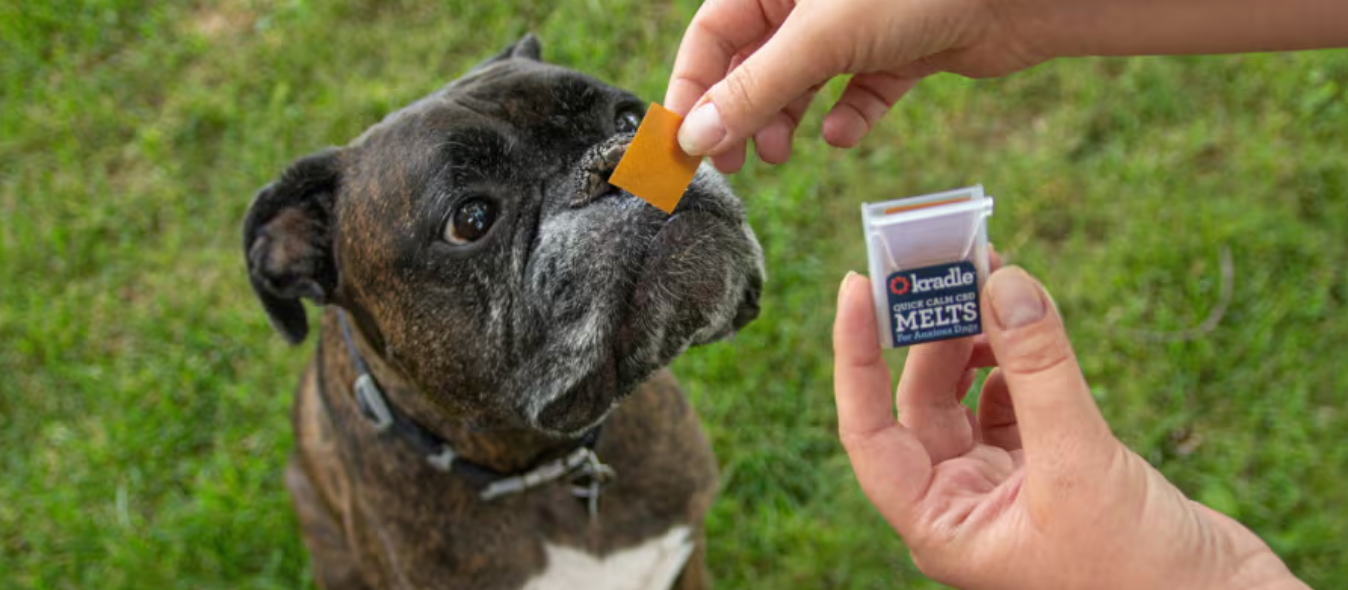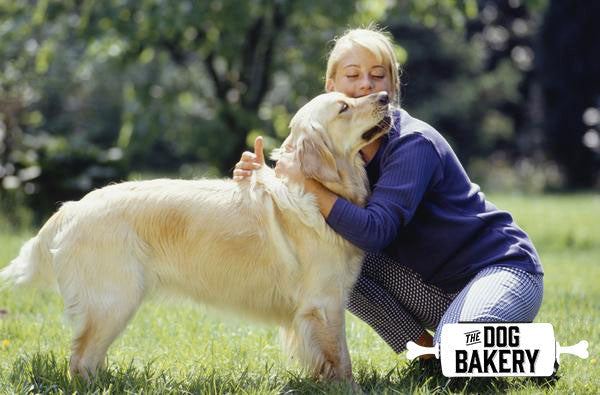So your dog isn’t exactly Mr or Miss Congeniality. We can’t all be social butterflies! But as is often the case with humans, dogs can become shy for a number of reasons - whether they’re a rescue you’ve gotten whose likely had at least one other home before you or you have a brand new puppy on your hands. Rest assured, it is unlikely anything you’ve done, and could very well just be in the nature of the breed or something from their life pre-you. The good news is that shyness doesn’t have to be permanent. There are ways to combat it to help your pups become more confident and less fearful of their surroundings.
- Identify the fear. It might feel like who or what a dog is shy over is random. But you can often work to identify the root issue by simply making a list of all of the people or places your dog is afraid of. Get as specific as possible, and become aware of your dogs “tells” and triggers. Do they hide under the bed? Shake? Whine? These will help you know when you need to manage his or her environment to help them move forward and past their fears. Many fears present themselves in four ways: freeze, fight, flight and fool around.
- Start small and don’t push. Just like a shy friend wouldn’t want their first foray into a social atmosphere to be a massive house party, a shy dog shouldn’t be immediately thrown to the wolves. Start small by encouraging them. Dogs are aware of our own emotions, so try using a playful, warm tone when they’re in a situation they might be uncomfortable with. Keep excitement level regulated though, as fear and excitement can become two sides of the same physiological coin. If they’re still on the verge of worry, take them out of the situation. Always quit while you’re ahead!
- Keep it predictable, within reason. You can’t shield your dog from every experience (nor likely should you) but shy dogs often do best with predictable, familiar patterns and fall apart when things seem or feel out of place. Keep their anxieties in check by establishing clear routines and using reward-based training. While a social dog is probably used to (and comfortable with) new people coming into your home, a shy dog will do best if they have a routine for this. For instance, you can teach your dog to go and lie on their bed when they hear the doorbell ring. This gives them a comfortable and safe space to retreat to. Train your human friends - no matter how dog friendly and knowledgeable they are! - to wait to be approached by your dog. Rushing over to ruffle their ears may come from a good place, but will likely not be a welcome greeting in the eyes of your pup.
- Get them some outgoing friends. If your pup is great with other dogs and just anxious around humans, they will usually benefit from spending time with social doggie friends. Try walking them together, as there is evidence that an anxious dog’s fears can be eased by the company of a non fearful companion. This won't immediately cure your dog overnight, of course, but it’s a small and important way to improve their quality of life and confidence-building in the right direction.
- Train for confidence. Training a dog, even just a few simple behaviors, can greatly influence their confidence and overall attitude, which can lead to better reactions overall. There are three specific training exercises that can really help a dog’s confidence. One is to have them ask politely for everything. Train them to sit down before you give them treats, open doors, etc. This builds structure (which, as we’ve mentioned, is hugely stress-relieving) and teaches your dog to look to you for guidance. Mark all positive behaviors around people, whether it’s with a clicker or the word “yes!” and a treat. Do this whether you asked for the behavior or not, and the reward and your happiness can work as a coping mechanism to help them reduce their own stress level. You can also train your dog to watch you, often by using the command “watch me” when they begin to get nervous in public.
- Work on both desensitization and counterconditioning. Think of what you’re afraid of. Spiders? Heights? Planes? No matter the fear, you know you cannot reason it away. Exposure to the thing that scares you simply scares you, making your palms sweat and your heart beat quicken. This is likely similar to what your dog is experiencing - an emotional and physical reaction. There are two important methods you can use once you’ve mastered basic training and identifying the root issues and triggers. Desensitization is exposure to the fear-inducing stimulus at a low threshold. Counter-conditioning is presenting a pleasant stimulus (a very special treat or time throwing the ball) in the presence of a scary one. So how exactly do you do this? First, figure out your dog’s exact threshold. Consider things like how close the person is, how many people are there and what they’re doing. Start by having a designated stranger (to the dog, not you - that might be weird!) come into the environment at a safe distance that the dog is still comfortable with. Each time they appear and your dog notices, start feeding them special treats. Once they leave, stop. Repeat this until your dog is good about looking to you for the good stuff when put in this same situation. Once they seem more comfortable at this level, have the stranger come a little closer (not leaps and bounds here, small increments over time). Repeat this over several sessions and days for as long as it takes. Be patient! The payoff is worth the effort.
- Let the little guy set the pace. We get it - you think your dog is the bravest, smartest, sweetest thing on the planet. And we do too! But one of the most important things you can do as a pet parent is respect your dog's fears and allow them to set the pace for improvement around new and scary things. Provide consistency, maintain his basic training behaviors and provide him with great things in the presence of fearful scenarios to help them overcome their fears.
It’s important to note that the tips here are most useful for a dog with a mild issue of shyness. If you're dealing with more severe issues, you may want to consider speaking to your vet about medication that can relieve your dog’s anxiety and maximize his or her progress and also a trainer who could work on behavior modification.
Have a shy dog on your hands? Share your own stories and tips for socializing and helping more timid dogs in the comments below!









